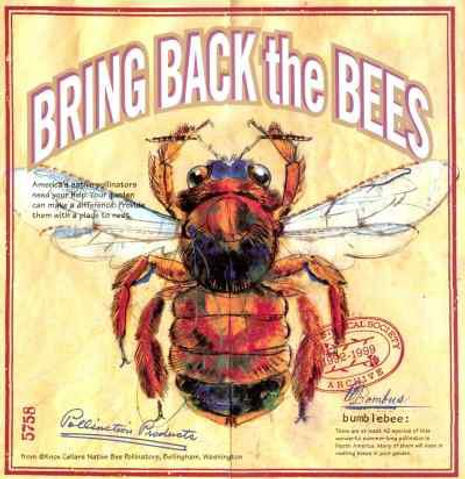
Events Calendar
2026
Spring Orchard Mason Bee Classes & Shows
~ Wild Birds Unlimited - Gardiner, WA January 18 at 11 am
~ Garden Spot Nursery - Bellingham, WA February 8 at 10 am
~ Tacoma Home & Garden Show - Tacoma, WA January 29th - February 1st
~ Northwest Flower and Garden Show - Seattle, WA February 18 - 22nd
~ Airport Garden Center - Port Angeles, WA February 28 at 11 am
~ Wild Birds Unlimited, Eugene, OR March 1 at 10 am
~ Soroptimist Gala Garden Show - Sequim, WA March 21 & 22nd
~ knoxcellarsmasonbees@gmail.com to schedule mason bee classes
Historical Events Starting 2022
2022
Spring Orchard Mason Bee Classes & Shows
~ Northwest Flower and Garden Show, February
2023
Spring Orchard Mason Bee Classes & Shows
~
2023
Fall Orchard Mason Bee Class
~ Venture Out Nursery, November 11th @ 11am
2024
Fall Orchard Mason Bee Class
~ Indianola Garden Club, September 18th @ 1230
~ Crescent Grange - PA, September 18th @ 7pm
~ Wild Birds Unlimited Olympia, October 6th @ 4pm
~ Bremerton City Nursery, October 12 @ 11am
~ NOPBA (North Olympic Peninsula Beekeepers Association) - October 13th @ 12pm
~ Bay Hay and Feed, October 19th @ 10am
~ Wild Birds Unlimited Wenatchee, October 26th @ 3:30pm
~ Fern Prairie Grange, Camas, WA, December 20, 7 pm
2025
Spring Orchard Mason Bee Classes & Shows
~ Wild Birds Unlimited, Gardiner, WA January 18 at 11 am
~ Tacoma Home & Garden Show - Tacoma, WA February 2 at 12 am
~ Sequim Prairie Garden Club - Sequim, WA February 3 at 10 am
~ Garden Spot Nursery - Bellingham, WA February 8 at 10 am
~ Gardiner Garden Club - Sequim, WA February 13 at 11:30 am
~ Gardiner Garden Club - Sequim, WA February 13 at 11:30 am
~ Wild Birds Unlimited - Gardiner, WA February 15 at 11 am
~ N. Olympic Peninsula Beekeepers Assoc - Port Angeles, WA Feb. 16 at 11 am
~ Northwest Flower and Garden Show - Seattle, WA February 19 - 23th
~ Venture Out Nursery - Langley, WA March 1 at 1:00 pm
~ Wild Birds Unlimited - Olympia, WA March 2 at 4 pm
~ Key Peninsula Beekeepers - Key Center, WA March 6 at 7 pm
~ Airport Garden Center - Port Angeles, WA March 8 at 11 am
~ Bremerton City Nursery - Bremerton, WA March 8th at 3 p
~ Herron Island Community Center - Herron Island, WA March 9 at 3 pm
~ Soroptimist Gala Garden Show - Sequim, WA March 15 & 16th
~ Ace Hardware Garden Center - Anacortes, WA March 22 at 1 pm
~ Wild Birds Unlimited, North Eugene, OR March 23 at 10 am
~ Ritters Garden & Gifts - Spokane, WA March 29 at 1:00 pm
~ Crab Creek Gardens - Moses Lake, WA March 30 at 11 am
~ Wild Birds Unlimited - Wenatchee, WA March 30 at 4 pm
~ Seven Summits Lodge - Bonney Lake, WA April 5 at 10 am
~ Colello's Farm Stand Produce - Port Orchard, WA April 12 at 11 am
~ Colello's Farm Stand Produce - Port Orchard, WA April 12 at 2 pm
~ Earth Day Celebration Tulalip Tribes, Tulalip, WA April 22 11am-5pm
~ Master Gardener Foundation of Pierce County 2025 Annual Plant Sale,
Puyallup, WA April 26-27 9am-4pm/10am-2pm
~ Ballard Locks - Pollinator Day, Ballard, WA June 21 9am - 2pm
2025
Fall Orchard Mason Bee Class
~ Wild Birds Unlimited - Olympia, WA September 28 at 4 pm
~ Key Peninsula Beekeepers - Key Center, WA October 2 at 7 pm
~ Wild Birds Unlimited, South Eugene, OR October 5 at 10 am (canceled)
~ Pierce County Beekeepers Association - Puyallup, WA October 6th at 6pm
~ Bremerton City Nursery, October 18 at 11am
~ Wild Birds Unlimited, Gardiner, WA October 18 at 11 am
~ Airport Garden Center - Port Angeles, WA November 1st at 11 am
~ Wild Birds Unlimited Wenatchee, November 2nd @ 4pm
~ Venture Out Nursery - Langley, WA November 9 at 1:00 pm (canceled)

